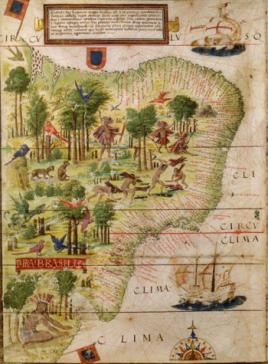This project investigated the development and transmission of color-altering technologies in the early modern Atlantic world, working with Berlin’s extensive South American ethnographic collections and important archives from German anthropological expeditions to Latin America. Focusing particularly on the effects of the brazilwood dye trade and the importation of Brazilian artifacts made from the scarlet ibis, this study examined shifting technological, cultural, and social valuations associated with variations of the color red. In both indigenous American and European cultures, reds, crimsons, and purples conveyed auratic power and social status, yet the introduction of new, artificial techniques to create the color, as exchanged in both directions across the Atlantic, threatened to undermine its status. This project examined the range of technologies used to create and alter color, as well as the shifts in concepts and the valuation of color that resulted from these.

